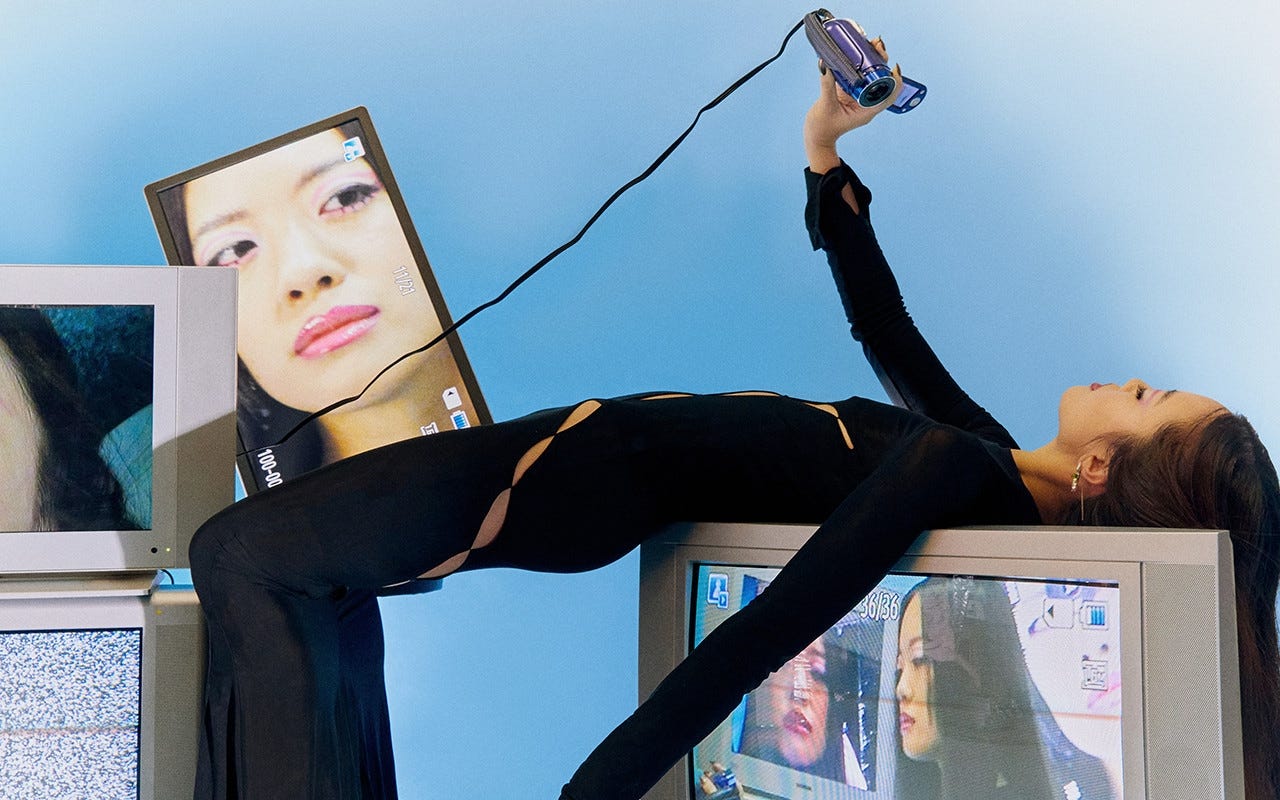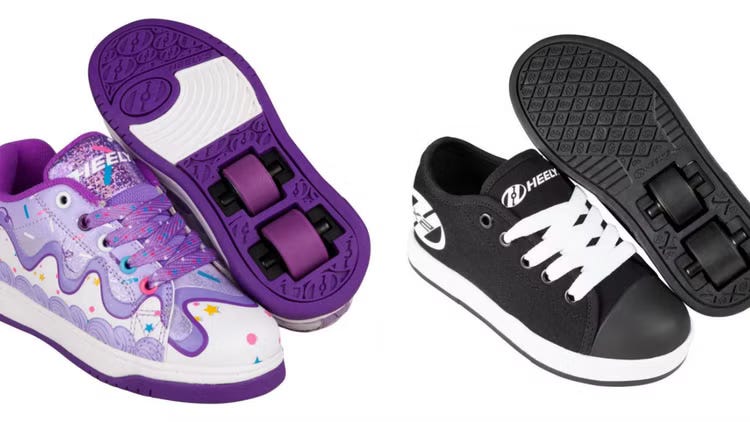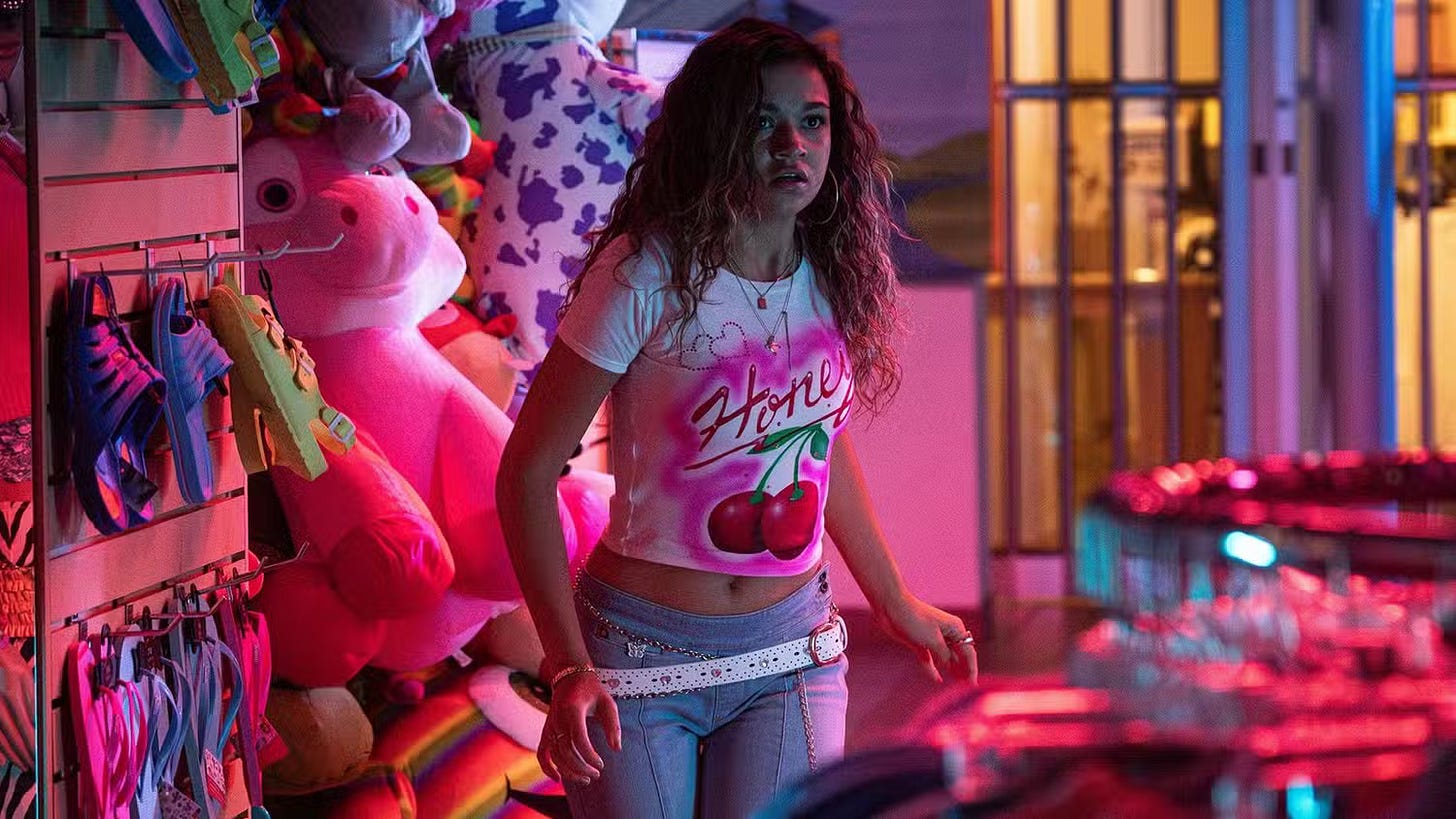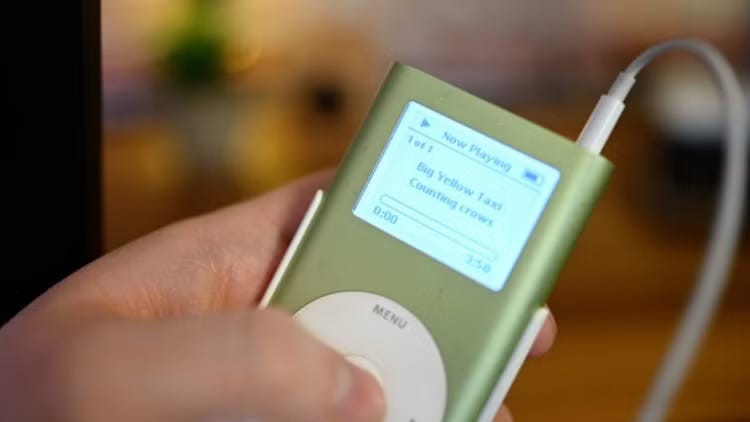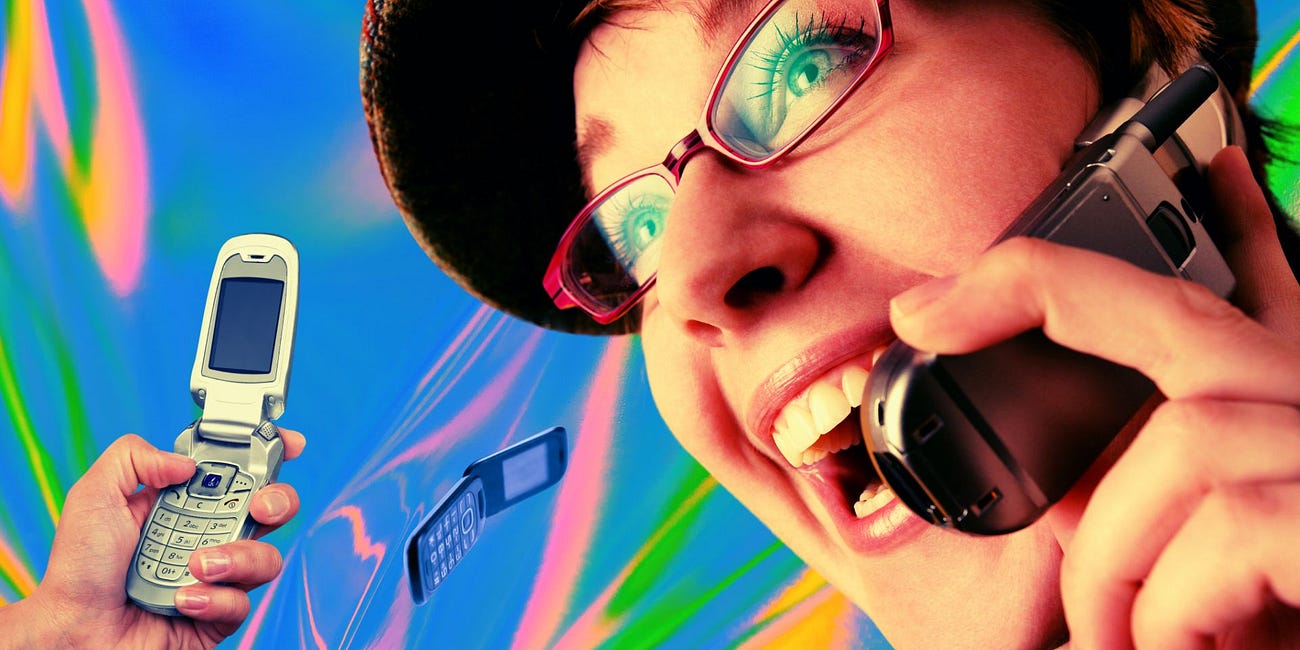Let's go back to 2003
CD players, sparkly belts, lots of colors, and even Heely's were brought up in one of Netflix's newest "horror" film.
The new Netflix film Time Cut takes a modern twist on time travel and horror, dropping a Gen Z protagonist into the year 2003—a time that feels like an alien world compared to today.
The movie centers around a young girl who travels back to 2003, where her sister was murdered, and attempts to solve the mystery before history repeats itself. But beyond the plot’s thrill factor, Time Cut is an interesting (and embarrassing) throwback to an era I would never have thought would resurface in a 2024 film.
I was still pretty young in 2003 but was instantly brought back in time after watching TIme Cut. The film brings back all of the elements that made the early 2000s “unforgettable”: CD players, sparkly belts, and something I had buried deep into my brain somewhere, Heelys.
The newer generation will never have the chance to experience the Heely’s thrill, the feeling of almost eating the ground testing them out on the sidewalk or at the mall, or getting in trouble in school up until they finally banned them and you would get your daily dose of an adrenaline rush, by still wearing them to school, but hiding from your teachers. What a time to be alive.
In the film, the characters are clueless about the internet, and Twitter doesn’t exist. For me, this was a jarring, nostalgic reminder of how quickly things have changed and how a single decade can feel like a century.
This kind of retro-horror gives major Scream vibes, echoing the simplicity of classic horror from the 90s and early 2000s. Today’s audiences are used to highly stylized effects and CGI, so Time Cut feels more in line with a time when horror relied on suspense and jump scares, not computer-generated gore.
A Gen Z Reaction to 2003
Imagine the shock of a Gen Z kid landing in 2003, thrown into a world without smartphones or social media, where you actually had to know someone’s number or write it down. This film uniquely plays with this culture clash, highlighting how vastly different the experience of growing up was for millennials and Gen Z. For millennials, it’s a nostalgic flashback, but for Gen Z, it’s an introduction to a “prehistoric” time.
The lack of constant connectivity in 2003 meant people lived more in the moment, a reality that seems almost romantic today. Friendships were built without the pressure of being “seen” online, and you couldn’t simply check someone’s location. And the novelty of a CD player—the excitement of holding a tangible album—strikes a sentimental note, especially in an era where most people haven’t bought physical music in years.
Nostalgia as a Trend: Why Are We Going Back?
The nostalgia wave isn’t unique to Time Cut; it's part of a larger trend. Y2K style and tech are making a comeback, from flip phones to baggy jeans. This revival might reflect a desire for simplicity, for a time before everything was digital.
According to a recent survey by Forbes, 67% of Gen Z and millennials admit to feeling overwhelmed by technology, with many craving a break from constant connectivity.
There’s a comfort in retro; for many people who lived through that era, it’s a reminder of simpler times.
But for those who lived it, the fashion and trends of the 2000s also come with a mix of cringes and laughs. Those sparkly belts and overly layered clothes, who let us dress that way? Yet somehow, seeing these old trends now feels both ridiculous and endearing. There’s a bittersweet nostalgia, as if these pieces of our youth are better left in the past, but are also fun to revisit from a safe distance.
Gen Z’s Fascination with the “Old-School”
What’s interesting is that Gen Z, who didn’t live through the 2000s, is fueling a lot of this retro craze. Brands are releasing limited-edition flip phones and retro designs, and music streaming services like Spotify report that Gen Z listeners are the top demographic for 90s and 2000s playlists. Maybe, for this digital-native generation, these trends are a way to experience the past they missed out on, a time when things felt slower and more intentional.
Beyond the nostalgic aesthetic, Time Cut raises an interesting question about the role of nostalgia itself. Are millennials looking to relive their youth, or is Gen Z trying to capture a slice? Or maybe we’re all craving something simpler, where horror movies had lower stakes, and so did life. In the era of constant digital noise, sometimes returning to CD players and sparkly belts doesn’t seem so bad…
I had written about this very topic not too long ago when it came to flip phones trending in Google searches and some parents buying them for their teenage kids. I am also considering doing the social experiment of buying a flip-phone and replacing my smartphone with it for a month or more if I make it that far.
What do you think should I go for it?
Flip Phones Are Trending Again: Here’s Why
As a millennial, although I greatly appreciate a good dose of nostalgia, I would have never imagined flip phones would come back in style.




